
With more than 3,000 mosques in Istanbul, the Blue Mosque (Sultan Ahmet Camii) still stands among the city’s most significant landmarks with its six minarets rising over the Sultanahmet District and facing the Hagia Sophia (Ayasofia Camii) across the shared square. A UNESCO World Heritage Site as a part of Istanbul Historic Areas, it represents one of the top attractions in Istanbul. Built in the early 17th century, the construction reaffirmed the Ottoman Empire's power and faith at a time of its decline.
Inside, over 20,000 Iznik tiles in blue and turquoise reflect light from more than 260 stained-glass windows. This gives the interior its famous colour and popular name. The mosque's original name, however, is the Sultan Ahmed Mosque, for the Ottoman ruler who commissioned its construction. The central dome, supported by semi-domes and columns, creates a sense of colossal space and serenity.
Among the most famous mosques in Turkey (Türkiye), the Blue Mosque is an active place of worship, while welcoming millions of visitors each year. People admire its architecture, history, and the atmosphere as one of the top places to visit in Istanbul.
Blue Mosque Tours
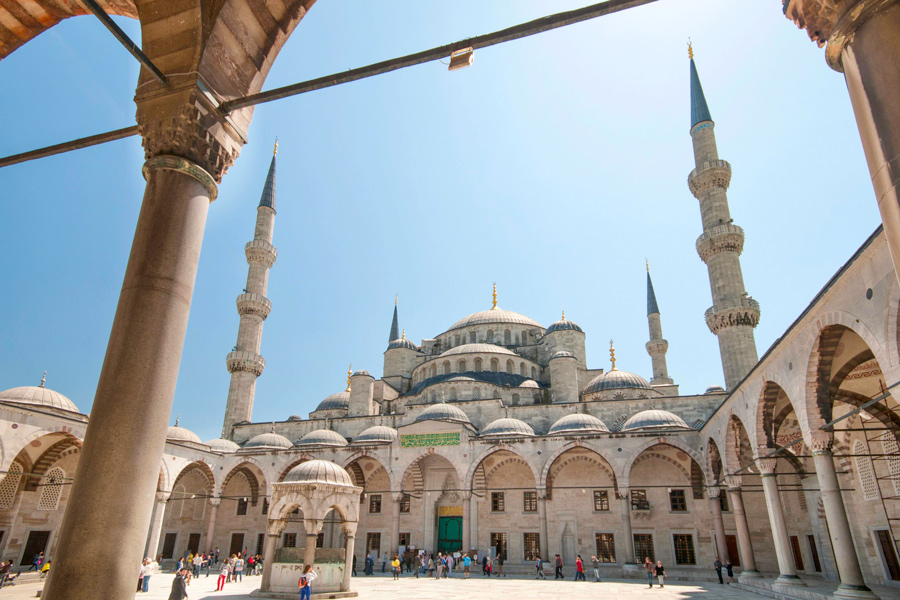
Touring the building is among the top free things to do in Istanbul and tickets for Blue Mosque are not needed. A typical tour lasts about an hour, while some stay longer to take in the details of its design and atmosphere.
The tour usually begins at Sultanahmet Square or the Hippodrome, with a short walk through Istanbul Old City. This represents an ideal way to appreciate its balanced proportions and six elegant minarets. Inside, visitors can admire the handmade İznik tiles, about 260 stained-glass windows, and the vast prayer hall. Guided tours will encompass the mosque’s architectural features, Ottoman history, and Islamic art.
The best time to visit the Blue Mosque in Istanbul is early morning or late afternoon on weekdays. During these times, the crowds are smaller, and the light shines softly through the domes.
Sultan Ahmed I and the History of the Blue Mosque
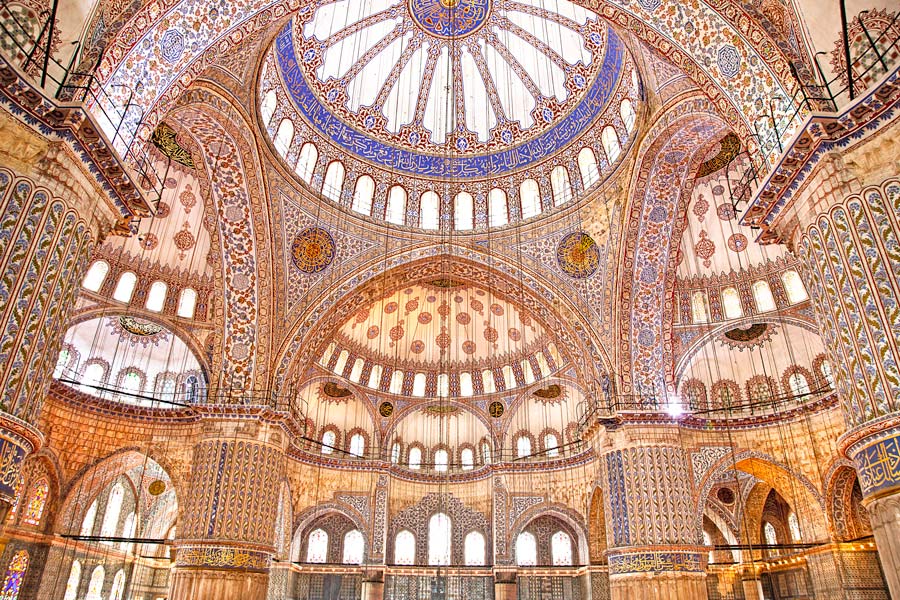
Sultan Ahmed I took the Ottoman throne in 1603, at just thirteen, inheriting an empire marked by political unrest. The long wars with the Habsburgs in the west and the Safavids in the east had weakened the country, while internal revolts shook Anatolia. Though he was young, Ahmed refused to kill his brother Mustafa, breaking a brutal Ottoman tradition. This decision quietly reshaped Ottoman succession for the centuries to come.
The empire suffered a series of defeats, and its authority began to stumble. In response, the Sultan decided to renew its spiritual and political strength through faith and architecture. The sultan broke with tradition by using state funds to build this great Mosque, giving foundation to Blue Mosque history. This was a controversial move, as his predecessors had always financed such monuments from war spoils.
Construction began in 1609 under architect Sedefkâr Mehmed Ağa, a pupil of Mimar Sinan, and continued for seven years. The mosque stood directly opposite the Hagia Sophia, symbolically linking and rivaling the city’s Byzantine and Ottoman faiths. Since only the Grand Mosque in Mecca had six minarets, the new mosque's identical feature was an unsettling choice. Then Sultan Ahmed ordered the addition of a seventh minaret to the Meccan mosque, turning controversy into reverence.

The finished Istanbul Blue Mosque became a masterpiece of Islamic art and architecture, uniting harmony, geometry, and devotion. Over 20,000 İznik tiles in bright blue colours gave the interior its famous glow. Calligraphic panels and stained glass made the large dome look like a vision of heavenly order. Sultan Ahmed I, who died young in 1617, was buried within its courtyard according to his wish to rest beside his greatest creation.
Over four centuries later, the Blue Mosque remains one of the most important historical mosques in Turkey (Türkiye). It continues to serve as both a place of worship and one of the top Istanbul tourist attractions.
Architecture of the Blue Mosque
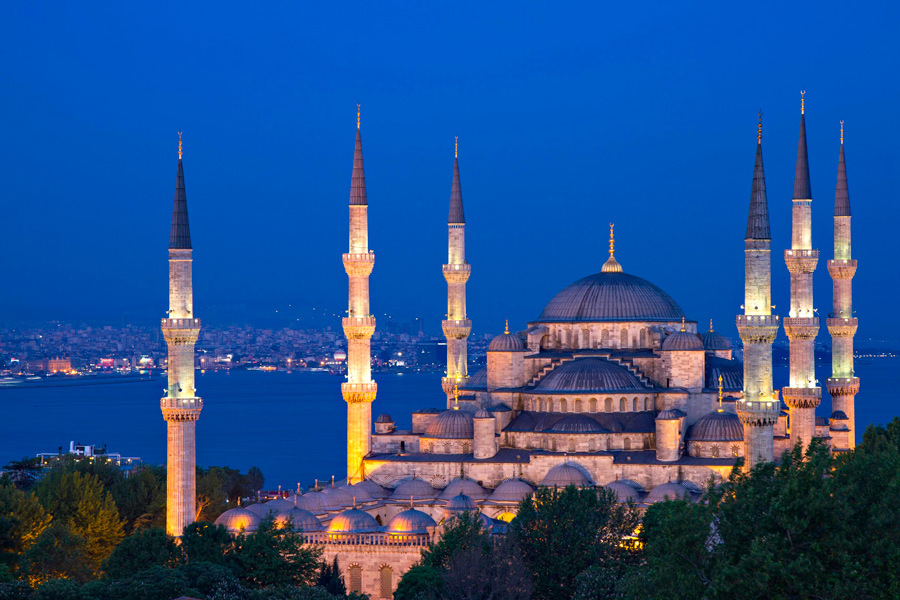
With the combination of traditional Ottoman elements and Byzantine architecture, architect Sedefkar Mehmed Agha drew direct inspiration from Hagia Sophia. Completed in 1616, it is distinguished by its six minarets, cascading domes, and large central courtyard. The structure follows a perfect symmetry, while Iznik tiles and stained-glass windows define the interior. Together, these features make the mosque one of the most studied examples of classical Ottoman architecture.
Sedefkar Mehmed Agha
The architect of this masterpiece was Sedefkar Mehmed Agha. He was an Albanian-born craftsman and a devoted student of the famous Mimar Sinan. Before becoming an architect, Mehmed Agha was a master of intricate inlay work. Brought to Istanbul through the palace schools, he earned the name Sedefkar - 'worker in mother-of-pearl.
After his appointment as chief imperial architect in 1606, his crowning achievement was the Sultan Ahmed Mosque. Among the historical mosques in Istanbul, its design merged the magnificence of Hagia Sophia with Sinan’s elegant symmetry.
Exterior of the Blue Mosque

The exterior of the mosque is built as a powerful visual statement. Construction began in 1609 and completed around 1616-17.
The most striking feature of the Blue Mosque architecture is its six minarets, strategically positioned in two distinct groups:
- Four minarets at the prayer hall corners, each with three balconies (şerefe).
- Two minarets at the courtyard corners, each with two balconies.
Another defining feature of the Istanbul's Sultan Ahmed Mosque is its striking cascade of domes:
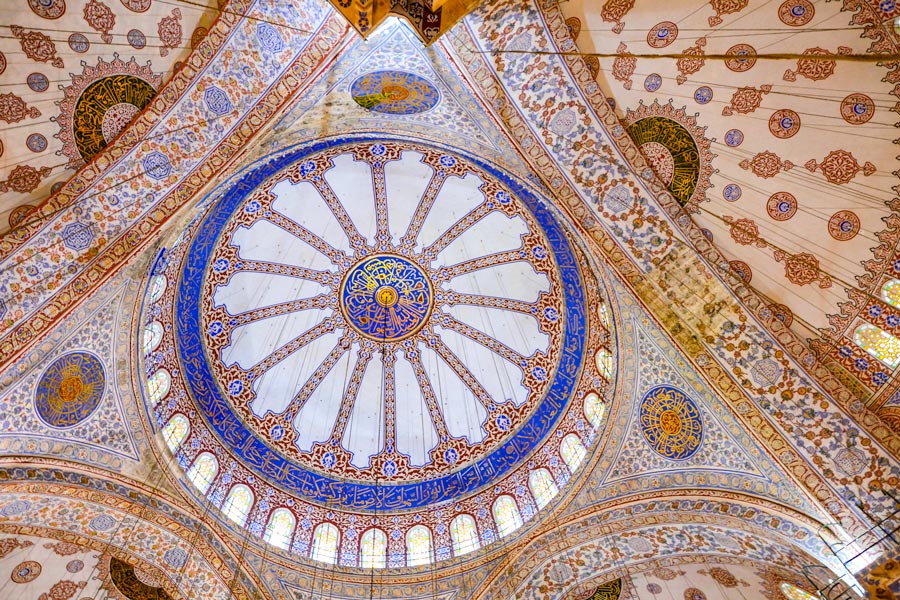
- The Main Dome: 43 meters (141 feet) high and 23.5 meters (77 feet) wide, held up by four huge pillars called "elephant feet."
- The Other Domes: Four half-domes and several smaller domes surround the main dome. This creates a layered, cascading roof that was typical for late Ottoman mosques.
Additionally:
- The Blue Mosque has a large courtyard with a fountain (şadırvan) for washing before prayers. The design helps people transition from the noisy city to a quiet, holy place.
- A chain hanging low in the doorway forced even the Sultan to bow his head when entering, reminding everyone to be humble.
Blue Mosque Interior

The interior of the Blue Mosque of Istanbul depicts a richly detailed environment of space, light and ornamentation.
- Tiles and Decoration
The interior is covered with more than 21,000 handmade İznik tiles, crafted in the workshops of İznik and Kütahya. These ceramic tiles display over 50 distinct motifs, including tulips, carnations, cypress trees, and intricate arabesques.
The prevailing shades of blue and turquoise give the building its popular name of the Blue Mosque. Tiles on the lower levels are richer in pattern and colour. On the upper galleries are simpler but arranged to reflect and diffuse light effectively.
- Light and Windows
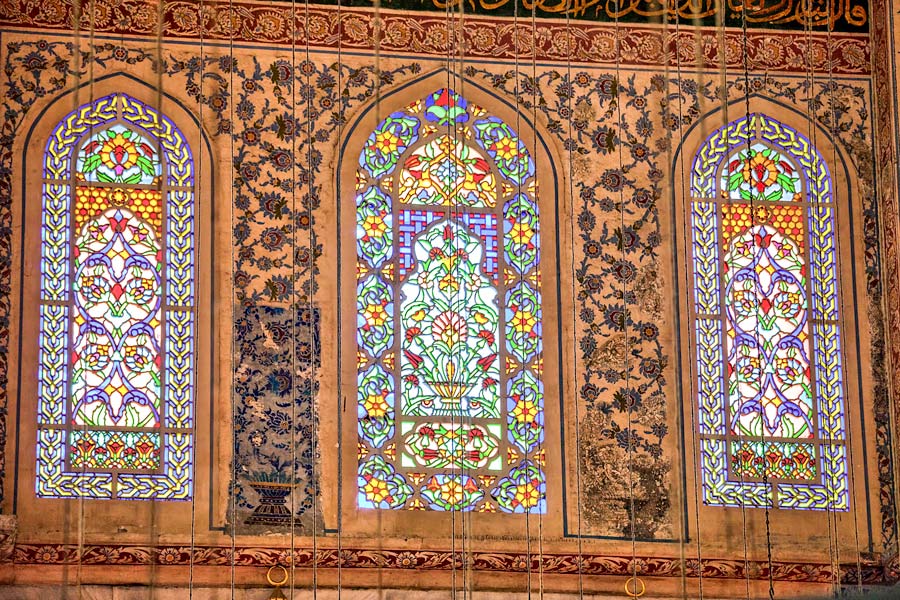
Approximately 260 windows fill Mehmed Ahmet Camii with natural light. The windows are in three main levels. There are large arched openings at ground level. Above them are rows at gallery level.
At the base of the main dome, there is a circular series of windows. This layered design allows sunlight to enter from multiple angles. Then the light softens the stone surfaces and creates a visual ascent from the floor toward the dome. The original windows were fitted with Venetian stained glass, later replaced in restorations.
- Prayer Hall
The major praying hall can fit up to 10,000 worshippers. The large carpeted floor there has traditional designs lined up with Mecca's direction. As there are no structural obstructions in the open area, the mihrab and minbar are clearly visible.
- Mihrab and Minbar

The qibla (direction of Mecca), is indicated by the mihrab, a beautifully carved niche made of white marble. Muqarnas (stalactite carvings), and gold Quranic inscriptions embellish its frame. The minbar, a tall pulpit where the imam delivers the Friday sermon, is next to it.
- Sultan’s Loge (Hünkâr Mahfili)
The southeast corner of the mosque is home to the Sultan's private lodge. It connects passage to the imperial pavilion and rises above the ground. For privacy, the lodge has window screens and its own mihrab. The Sultan could attend prayers in this area without interacting with the general populace.
- Külliye Mosque Complex

The Blue Mosque was a component of the broader Külliye imperial complex. It featured a hamam (bathhouse), imaret (public kitchen), madrasa (theological school), fountains, stores, and Sultan Ahmed's tomb.
- Calligraphy and Ornamentation
Quranic verses in exquisite calligraphy by Seyyid Kasim Gubari are inscribed on the walls, arches, and domes. The architectural geometry is complemented by these inscriptions, which highlight divine light and harmony.
- Acoustics
The tile surfaces, arches, and domes were all arranged to naturally disperse sound. Without any amplification or echo, the imam's voice can be heard clearly throughout the hall.
How to Get to the Blue Mosque
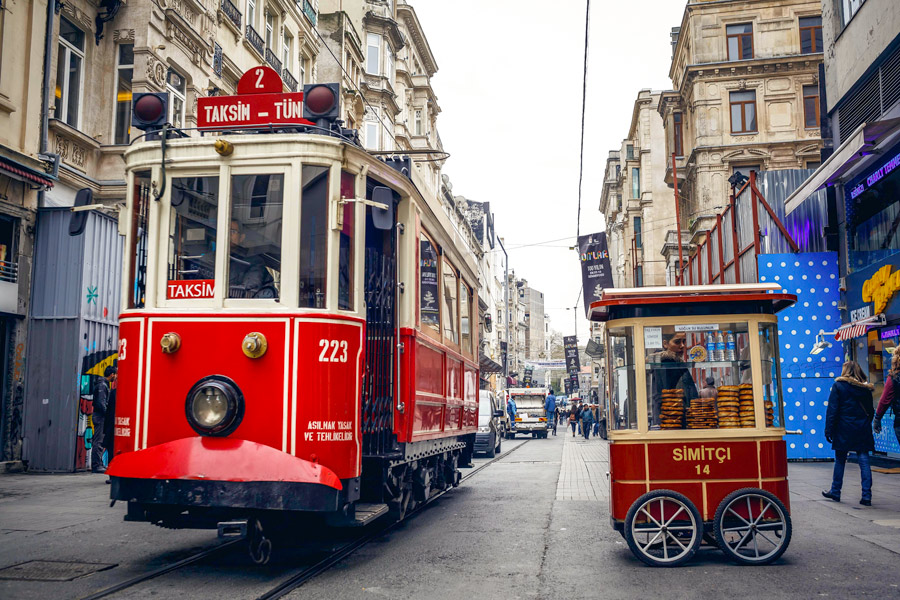
Getting around Blue Mosque is convenient and is reachable on foot or by public transportation.
By tram:
Go to Sultanahmet Station on the T1 Tram Line. The walk from the stop to the mosque takes four minutes. The line connects to ferries, metro lines, and other trams as it travels between Bağcılar and Kabataş.
By bus:
Routes 28, 28T, 38B, and 66 are among the buses stopping close to Sultanahmet Square. On the Istanbul Public Transportation website, you'll view the most recent schedules.
By Metro and Marmaray:
You can also take the M2 Metro to Vezneciler from the European side, then walk for fifteen minutes or change to the T1 Tram. Marmaray is an additional option to Sirkeci Station from the Asian side. Then one should go to Sultanahmet on foot or by tram for one stop.
By Taxi:
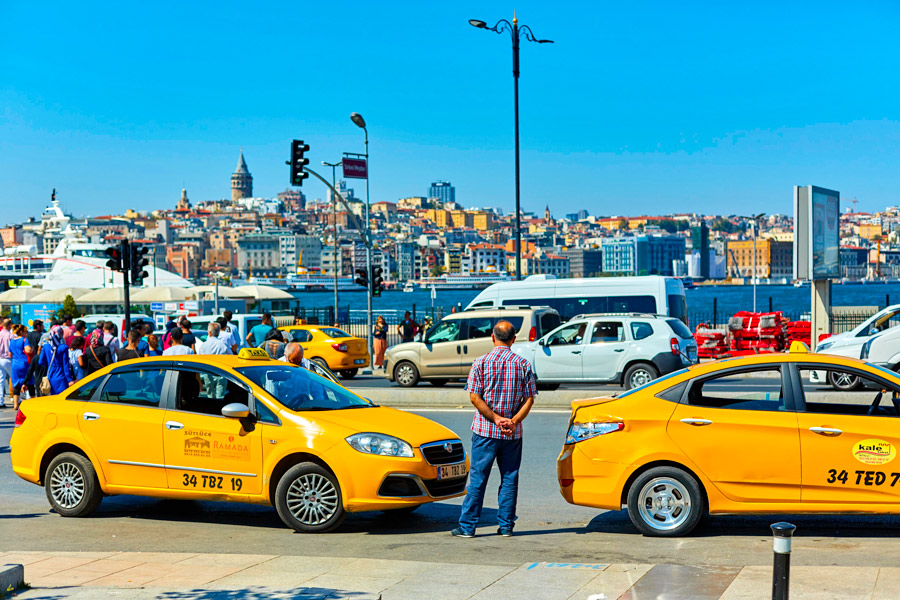
Depending on traffic, a taxi from Taksim to Sultanahmet costs roughly €6. Uber uses authorised taxis to operate in Istanbul.
By Automobile:
Because of the traffic and parking shortage, driving is not advised. Sultanahmet Vakfı Otoparkı and Tavukhane Sk. No. 10 Parking are nearby paid options.
From Taksim Square:
Take the F1 Funicular to Kabataş and transfer to the T1 Tram toward Bağcılar. Exit at Sultanahmet Station and walk 4 minutes to the mosque. Taxis take 15–25 minutes.
Entrances:
- West Entrance (Facing Hagia Sophia): Main visitor entrance, 2-minute walk from Sultanahmet Square.
- North Entrance (Facing the Hippodrome): For worshipers only.
- South Entrance: Alternative entrance for visitors and worshipers, closed to visitors during prayer times.
Security checks are required before entry, and wait times can reach up to 60 minutes during peak season. Arriving at Blue Mosque during opening hours (9AM) will ease your visit.
Sultan Ahmed Mosque within Walking Distance
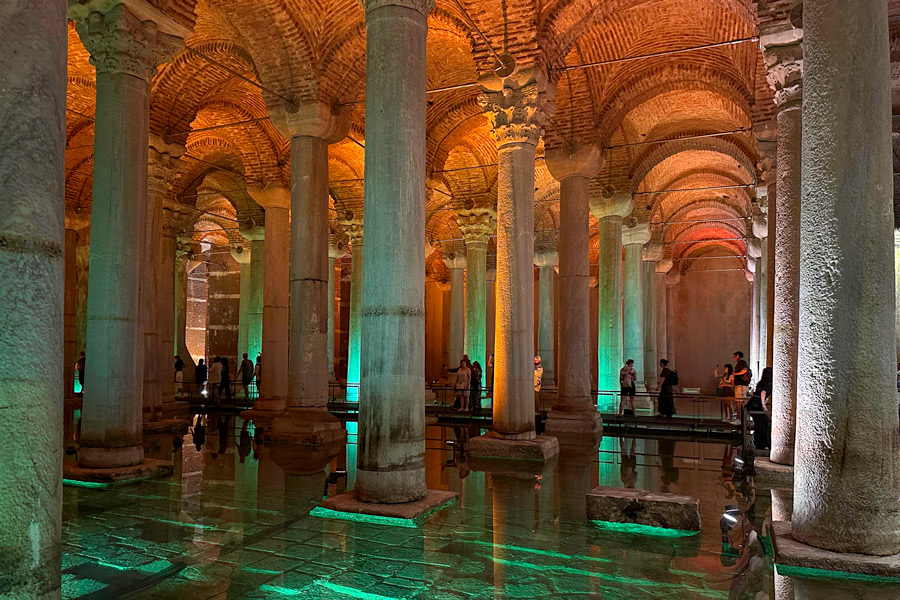
Wonder what is near Blue Mosque? Blue Mosque is surrounded by many of the city’s most important landmarks. Most major sites can be reached in 5 to 10 minutes on foot, making it ideal for walking tours.
- Hagia Sophia (Ayasofya-i Kebir Cami): 4-minute walk. Located directly opposite the Blue Mosque across Sultanahmet Square.
- Basilica Cistern (Yerebatan Sarnıcı): 4-minute walk. Ancient Byzantine underground water reservoir.
- Topkapı Palace: 8-minute walk. Former residence of Ottoman sultans, now a museum.
- Hippodrome of Constantinople (At Meydanı): 2-minute walk. Once the center of Byzantine public life, now an open-air historical site.
- German Fountain: 2-minute walk. Built to commemorate Kaiser Wilhelm II’s visit to Istanbul in 1898.
- Museum of Turkish and Islamic Arts: 3-minute walk. Located in the former palace of Ibrahim Pasha.
- Little Hagia Sophia (Küçük Ayasofya Camii): 7-minute walk. A smaller early Byzantine church turned into a mosque.
- Arasta Bazaar: 2-minute walk. Traditional market located behind the Blue Mosque, offering ceramics, textiles, and handicrafts.
- Gülhane Park: 9-minute walk. One of Istanbul’s oldest parks, located near Topkapı Palace.
- Grand Bazaar: 15-minute walk. The historic covered market with thousands of shops selling jewelry, carpets, and spices.
All of these sites sit within the Sultanahmet area. There visitors can easily explore the architectural, cultural, and religious heritage of Istanbul entirely on foot. Additionally, there are multiple hotels close to the Blue Mosque Istanbul.

